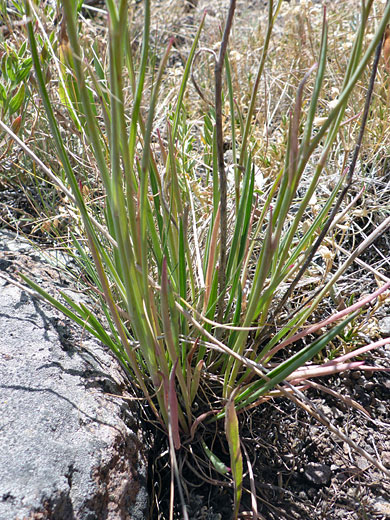
Yellow flowerheads of bupleurum americanum, along the Sepulcher Mountain Trail, Yellowstone National Park, Wyoming
Common name:
American thorow wax
Family:
Scientific name:
Bupleurum americanum
Main flower color:
Range:
The northern Rocky Mountains, plus small areas of Colorado, Oregon and New Mexico
Height:
Up to 20 inches
Habitat:
Rocky places, grassy hillsides, meadows; 4,000 to 12,000 feet
Leaves:
Linear or narrowly lanceolate, undivided, up to 5 inches long and less than half an inch wide
Season:
June to September
Bupleurum americanum is the only native US species of this small genus, and has a limited distribution, generally restricted to the northern Rocky Mountains, but also found in the San Juan Mountains of southwestern Colorado, and Lincoln county, New Mexico. Unusually for a plant in the apiaceae family, the leaves are simple, and undivided, growing mostly around the base. Stems and leaves are grey-green in color (glaucous), and hairless. Stems grow vertically upwards, or at an angle.
Flowers form at the tip of the stems, and also from the upper leaf nodes; a compound umbel of between 4 and 14 umbellets, with rays up to 2 inches long. Individual clusters are compact, and hemispherical, typically containing 10 to 20 tiny yellow flowers. A whorl of 2 to 6 light green, ovate, differently-sized bracts subtends each cluster, and also the base of the umbel. Flowers become reddish as they wither.
Flowers form at the tip of the stems, and also from the upper leaf nodes; a compound umbel of between 4 and 14 umbellets, with rays up to 2 inches long. Individual clusters are compact, and hemispherical, typically containing 10 to 20 tiny yellow flowers. A whorl of 2 to 6 light green, ovate, differently-sized bracts subtends each cluster, and also the base of the umbel. Flowers become reddish as they wither.
All Contents © Copyright The American Southwest | Comments and Questions | Contribute | Site Map


